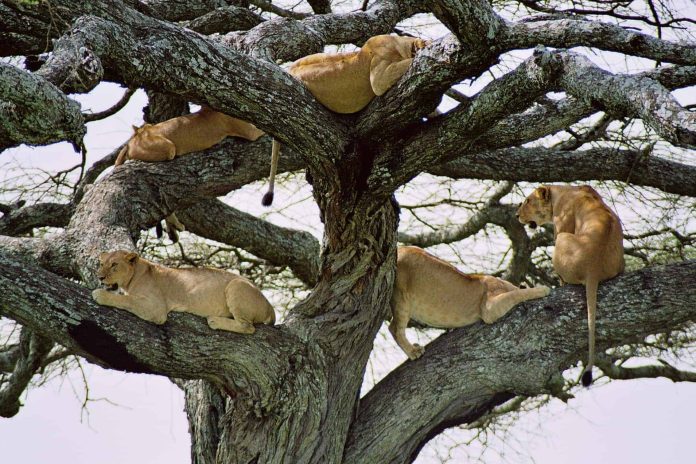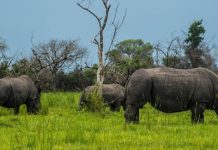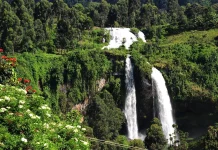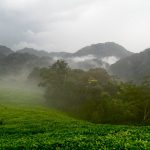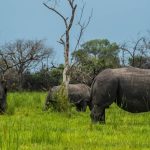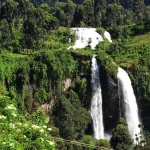Tree climbing lions are found in Ishasha, the southern sector of Queen Elizabeth National Park. This sector offers game drives which have the highlight of searching for tree climbing lions. However, there are also other animals that can be spotted during the experience like; elephants, buffaloes, topi, Uganda kobs, oribi, and bush bucks. Tree climbing is a usual behavior in the cat family however, rare to see some species like lions and cheetahs climbing trees.
Why tree climbing lions in Ishasha sector of Queen Elizabeth National Park
There are researched assumptions that explain why lions have adapted to climb trees and why it is more common in Ishasha than elsewhere. Some of these reasons include;
The nature of the trees in Ishasha sector, ficus sycamorus also known as sycamore fig is the most climbed tree species. This is because the tree has big and thornless branches which can lift the weight of a mature lion and the whole of the pride from cubs to the mother to the king( male lion). Lions like sleeping on branches of the trees which have no strikes and hooks because of their berry which has soft skin. Also these trees have many branches and broad leaves that can give a good shade during sunny hours to avoid sunburn.
According to research lions in Ishasha they mostly climb trees between the time of 11 am to 5 pm which is always hot hours. This implies that they climb up to escape the heat and look for fresh air since they have few sweating glands so as to regulate their body temperature.
The vegetation type in Ishasha sector is also another theory as to why tree climbing lions are more common in this sector. Ishasha is covered by savannah woodland which is adorned with tall grass like spear grass(Heteropogon contortus) and thickets which affect the vision of the lions to spot well prey.
Another theory was that the outbreak of the tsetse flies in the area also influenced these lions to adopt climbing tall trees so as to avoid fly bites. These flies could not allow lions to rest during hot hours and since flies cannot exceed the height of 5ft to avoid irritations by insects and bugs on the ground, lions resorted to climbing trees.
Best time to see tree climbing lions
Tree climbing lions in Ishasha can be spotted anytime throughout the year though the best time to spot them is during the dry season. During the months of June, July, August, September, October, December, January and February. In this time there is less rainfall and vegetation is short which offers a clear view of tree climbing lions. Also during this period the roads in Ishasha and Queen Elizabeth National Park are passable which makes game drives in the area easier.
How to access Ishasha sector in Queen Elizabeth National Park
Ishasha sector can be accessed by road or air. The sector is found in the southern part of Queen Elizabeth National. Road transport from Kampala to Ishasha takes 7 to 8 hours drive using Kampala- Mbarara- Kasese road or Kampala- Mubende-Fort Portal- Kasese road. You can also access Ishasha sector from Bwindi Impenetrable National Park passing through coffee plantations in Kihihi. The journey takes 2 to 3 hours. And those from Kigali- Rwanda you will pass via Katuna border and then Kabale- Ntungamo- Kasese road. This journey takes 5 to 6 hours.

Those seeking convenience and speed, air travel provides a seamless option. Tourists can book scheduled or chartered domestic flights from Kajjansi Airfield and Entebbe Airport. The flight takes just under two hours to reach Ishasha sector, with Kihihi and Kasese airstrips serving as landing sites. When booking flights to Queen Elizabeth National Park, you can contact domestic airline offices or you can go through tour operators.
Accommodation in Ishasha sector
The park has a variety of accommodation facilities in Ishasha sector ranging from budget, mid range and luxury. Some of these facilities include; Ishasha Wilderness camp, Enjonjo lodge, Ishasha Jungle lodge, Ishasha pride lodge and Topi lodge.
